... newer stories
Dienstag, 17. Januar 2017
Trujillo, Chiclayo and Tumbes
zwinkerschaedel, 04:15h
This blogpost is about the northern Peruvian Coast. After Cusco I flew to Trujillo in the North of Peru to make my way up towards Ecuador. To be honest, I didn't really enjoy Northern Peru that much (with a few excptions). If this was due to the travelling blues or due to everything being less clean (streets, hotels, beaches), I don't know. I will only show you the few exceptions:
Trujillo:
Trujillo is the third biggest town in Peru. It has a very nice and colorfull old colonial city center. In the area there are several ruins of two pre-Inca cultures, the Moche and the Chimu. The Moche culture was dominant in Northern Peru between roughly 100-800 a.D., the Chimu followed later.
I visited the site of the Temple of the Sun and the Moon and had the luck of a very good privately guided tour through the Moon Temple with its beautifull friezes and wall paintings.
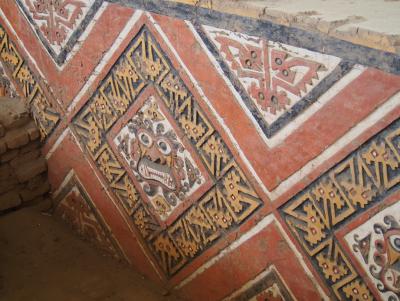
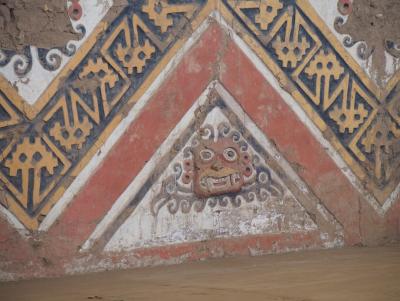
The main Moche God Al Apaec, the Creator
I also visited the huge city of Chan Chan, the capital of the former Chimu culture. With roughly 60.000 inhabitants it was one of the largest cities in the world at its time. Not a lot remains of this city since the Spanish and several El Nino phenomena destroyed the clay structures. Except fot the size I wasn't too impressed...
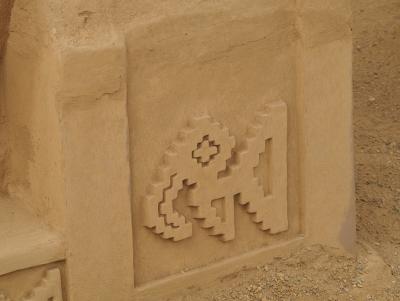
Pelican.
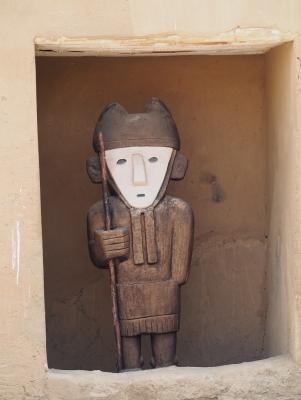
Chimu warrier
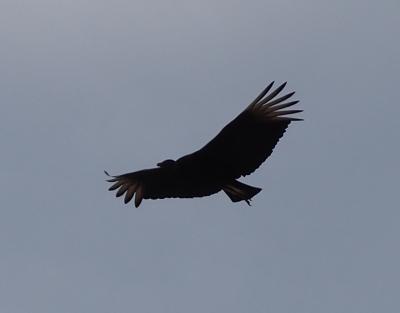
Lots of black vultures were circling around Chan Chan.
I also visited the beach of Huanchaco with its famous Caballitos de Totora, small reed boats that have been used by local fishermen for centuries. Now they are a tourist attraction...
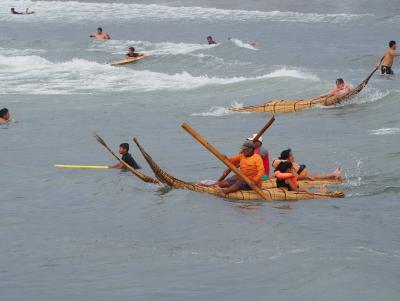
Chiclayo:
After Trujillo I travelled north to Chiclayo which I used as a base to visit the famous Museo Tumbas Teales de Sipan in Lambayeque. This was one of the absolute highlights of my trip in Peru so far and by far the best museum! It is dedicated to findings of tombs in the area in 1987: A local archaeologist noticed a large influx of precious Moche artwork on the black market in early 1987 and through carefull questioning was led to burial sites. He there discovered mostly untouched graves of two Moche rulers (father and son) and a high priest filled with precious artwork and pottery including lots of gold, silver and semi-precious metals and jemstones. The museum displayes the exhibits in the order of discovery and in painstaking detail show the many layers of robes armor and other grave goods. The intricate detail of the artwork is breath-taking and the didactic display is just marvelous! If you are ever in Northern Peru, don't miss this jewel!
Unfortunately (but rightly so) I wasn't allowed to take any pictures in the museum, so I'll have to show you some pix I found online:
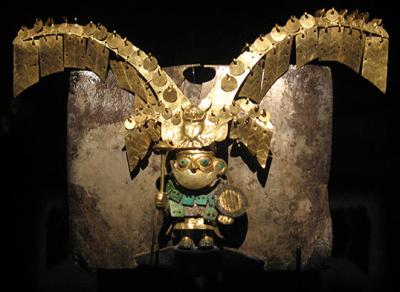
This noseguard was used to cover the teeth of the person wearing it, hiding his "human" characteristics (rulers and high priests were seen as personified gods).
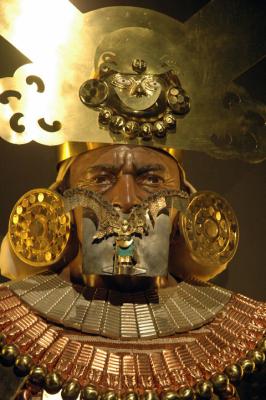
Here you can see how the noseguard would have been worn on a reconstruction of the Senor de Sipan.
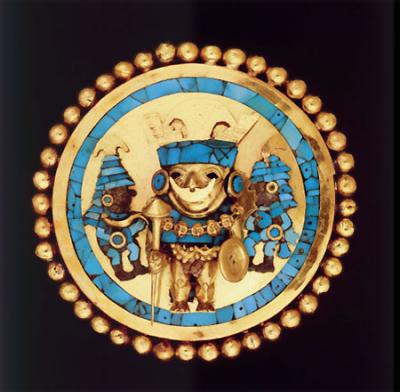
Earrings the size of my palm.
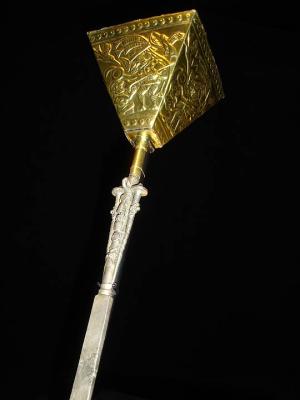
Golden sceptre of the king. He also had a smaller silver sceptre with him, both representing the duality in life with gold standing for the sun and masculinity and silver for the moon and femininity.
Tumbes:
After Chiclayo I travelled to Tumbes, a town 30km from the Ecuadorian border. There are the only mangrove forrests of Peru and I went on a small boat tour to view the Isla de Pajaros, a nesting island of local birds, especially the frigatebird and many types of herons. In the mating season (unfortunately May-June) the male birds develop a bright red gular sack which it inflates to attract females. On the way I also saw lots of pelicans.

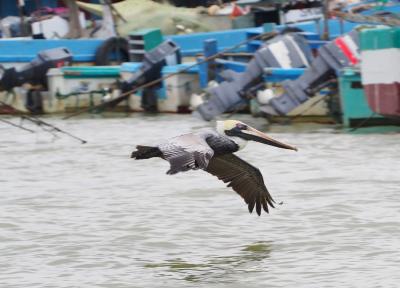
Pelicans
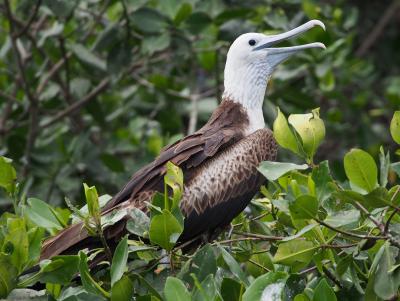
juvenile frigate bird
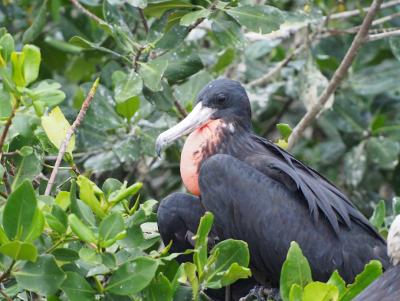
adult frigate bird with small slightly red gular sack

One of the many different herons
All in all I think I will have to visit Northern Peru once again some time. Especially the Northern highlands are supposed to be very nice and I was sad to have had to skip them... And maybe I'll enjoy the Northern coast when coming there with a different mindset...
Trujillo:
Trujillo is the third biggest town in Peru. It has a very nice and colorfull old colonial city center. In the area there are several ruins of two pre-Inca cultures, the Moche and the Chimu. The Moche culture was dominant in Northern Peru between roughly 100-800 a.D., the Chimu followed later.
I visited the site of the Temple of the Sun and the Moon and had the luck of a very good privately guided tour through the Moon Temple with its beautifull friezes and wall paintings.


The main Moche God Al Apaec, the Creator
I also visited the huge city of Chan Chan, the capital of the former Chimu culture. With roughly 60.000 inhabitants it was one of the largest cities in the world at its time. Not a lot remains of this city since the Spanish and several El Nino phenomena destroyed the clay structures. Except fot the size I wasn't too impressed...

Pelican.

Chimu warrier

Lots of black vultures were circling around Chan Chan.
I also visited the beach of Huanchaco with its famous Caballitos de Totora, small reed boats that have been used by local fishermen for centuries. Now they are a tourist attraction...

Chiclayo:
After Trujillo I travelled north to Chiclayo which I used as a base to visit the famous Museo Tumbas Teales de Sipan in Lambayeque. This was one of the absolute highlights of my trip in Peru so far and by far the best museum! It is dedicated to findings of tombs in the area in 1987: A local archaeologist noticed a large influx of precious Moche artwork on the black market in early 1987 and through carefull questioning was led to burial sites. He there discovered mostly untouched graves of two Moche rulers (father and son) and a high priest filled with precious artwork and pottery including lots of gold, silver and semi-precious metals and jemstones. The museum displayes the exhibits in the order of discovery and in painstaking detail show the many layers of robes armor and other grave goods. The intricate detail of the artwork is breath-taking and the didactic display is just marvelous! If you are ever in Northern Peru, don't miss this jewel!
Unfortunately (but rightly so) I wasn't allowed to take any pictures in the museum, so I'll have to show you some pix I found online:

This noseguard was used to cover the teeth of the person wearing it, hiding his "human" characteristics (rulers and high priests were seen as personified gods).

Here you can see how the noseguard would have been worn on a reconstruction of the Senor de Sipan.

Earrings the size of my palm.

Golden sceptre of the king. He also had a smaller silver sceptre with him, both representing the duality in life with gold standing for the sun and masculinity and silver for the moon and femininity.
Tumbes:
After Chiclayo I travelled to Tumbes, a town 30km from the Ecuadorian border. There are the only mangrove forrests of Peru and I went on a small boat tour to view the Isla de Pajaros, a nesting island of local birds, especially the frigatebird and many types of herons. In the mating season (unfortunately May-June) the male birds develop a bright red gular sack which it inflates to attract females. On the way I also saw lots of pelicans.


Pelicans

juvenile frigate bird

adult frigate bird with small slightly red gular sack

One of the many different herons
All in all I think I will have to visit Northern Peru once again some time. Especially the Northern highlands are supposed to be very nice and I was sad to have had to skip them... And maybe I'll enjoy the Northern coast when coming there with a different mindset...
... link (0 Kommentare) ... comment
... older stories